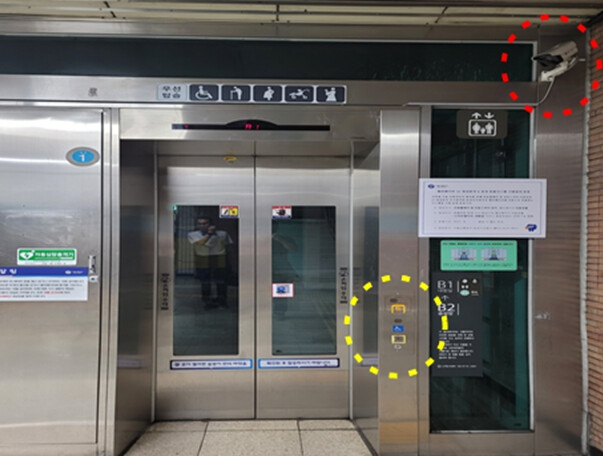
Seoul, South Korea – A growing number of Seoul subway commuters are expressing frustration over the city's subway elevator systems, specifically the non-functioning close buttons. Despite pressing the buttons, passengers often find themselves waiting an extended period for the elevator doors to close, leading to significant delays.
The Seoul Metropolitan Rapid Transit Corporation (SMRT) attributes this delay to the "Accessibility for People with Disabilities Act," which mandates that elevators in subway stations remain open for at least 10 seconds to accommodate individuals with disabilities. The corporation argues that individuals with disabilities require more time to enter and exit elevators, and the inactive close buttons are a safety measure to prevent accidents.
However, this explanation has not quelled public discontent. Numerous citizens have taken to online platforms to voice their complaints, citing inconvenience and inefficiency. One Seoul resident, Lee, expressed frustration over the delays, especially when carrying heavy luggage. "I don't understand why the close button is disabled when it could be activated when someone else enters. It would be more efficient," Lee said.
Kim, a senior citizen who relies on elevators due to mobility issues, echoed these sentiments. "It's frustrating to wait so long for the doors to close, especially when someone else enters just as they're about to shut. Sometimes, it feels like it takes forever to get to my destination," Kim said.
While many passengers understand the need to accommodate people with disabilities, others argue that there should be a balance between accessibility and efficiency. Some have suggested separating elevators for people with disabilities and general use.
"It's important to be considerate of people with disabilities, but it's also frustrating for those who are able-bodied," said Jung, a Seoul resident. "Perhaps we could have separate elevators for people with disabilities and those who are able to use stairs or escalators."
Shin Sang-hwa, a professor of elevator engineering at Korea Elevator University, agrees that a more nuanced approach is needed. "While it's essential to prioritize the needs of people with disabilities, it's also important to consider the overall efficiency of the subway system," Shin said. "Separating elevators for different user groups could be one solution, but it's equally important to foster a more inclusive society where able-bodied individuals are willing to be patient and considerate of others."
The SMRT maintains that its current policy is in line with accessibility regulations and is designed to ensure the safety of all passengers. However, as public pressure mounts, the corporation may need to reconsider its approach and explore alternative solutions that balance the needs of people with disabilities with the convenience of the general public

[Copyright (c) Global Economic Times. All Rights Reserved.]






























